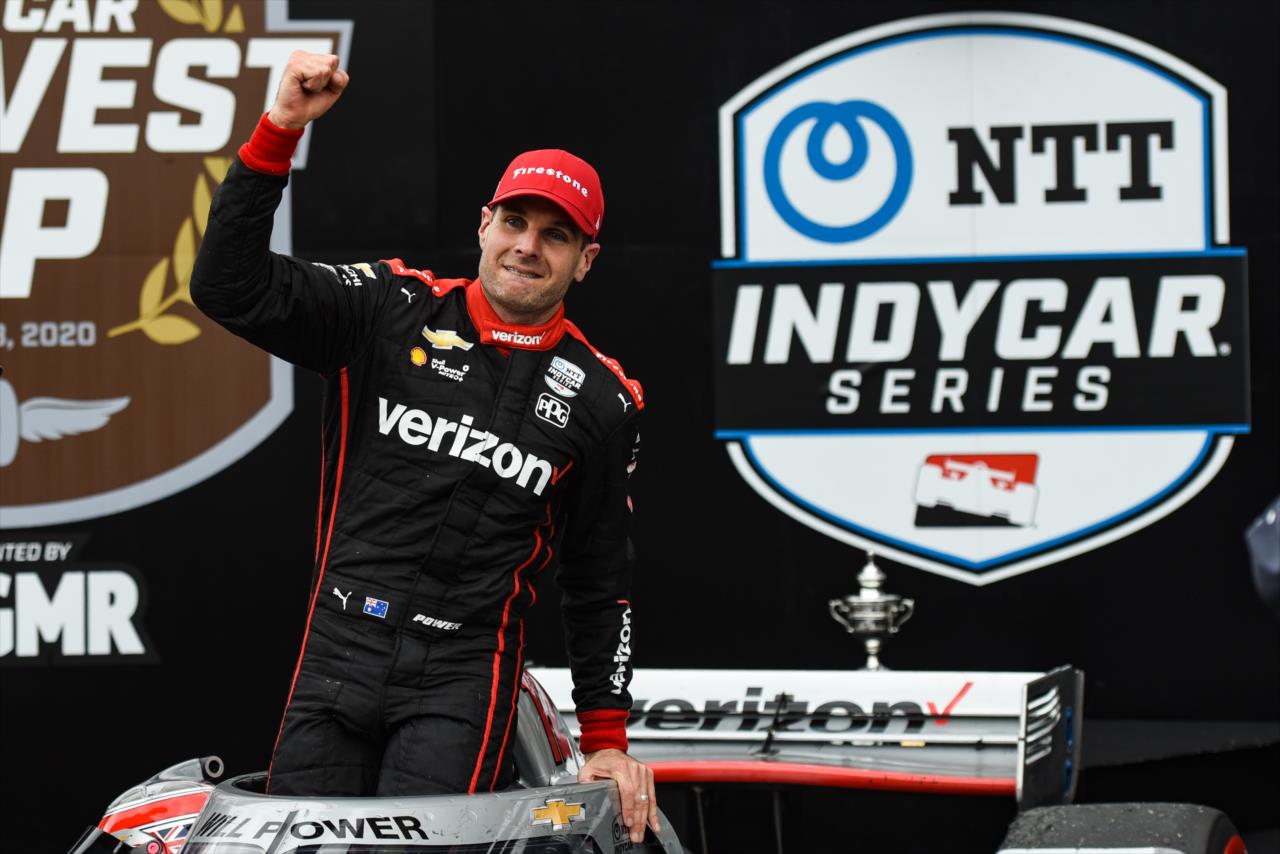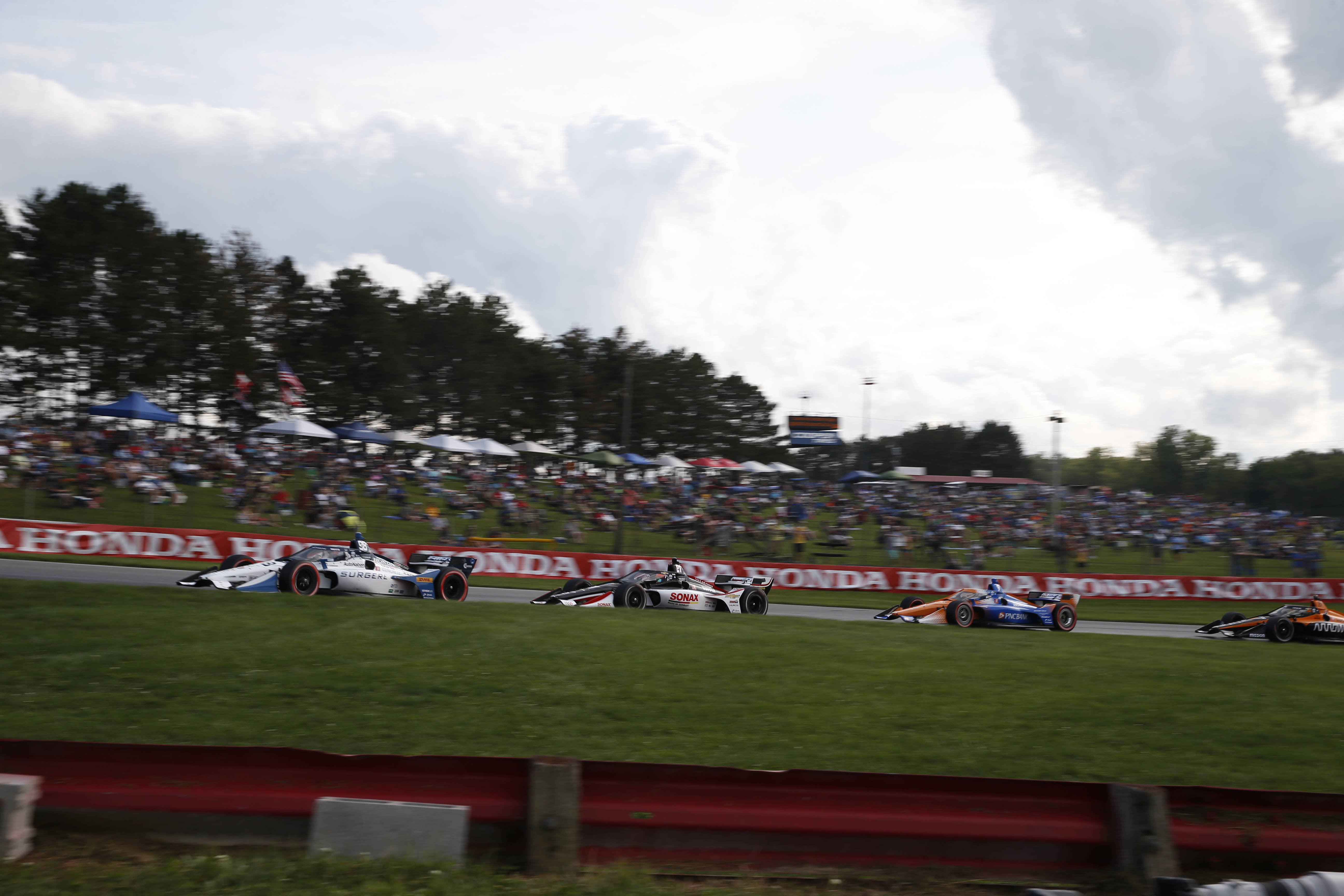until Abu Dhabi Autonomous Racing League

After watching the two Indianapolis road course races last weekend, the last thought on the mind was – how can IndyCar improve overtaking? The first race in particular was a spectacular affair with dices throughout the field.
Arguably the pick of the bunch was Colton Herta’s move on Rinus VeeKay. It was a fight for the net lead, and with Herta on warm tyres it was key for him to get past as Josef Newgarden attempted an overcut strategy.
On the straight from Turn 6 to Turn 7, Herta weaved from viewer’s left to right – hiding in VeeKay’s blindspot – to launch a move down the inside.
That was AWESOME!
Are we looking at the future of @IndyCar with @RinusVeekay and @ColtonHerta, here? #HarvestGP on @USA_Network. pic.twitter.com/qiJ8YeW0dh
— IndyCar on NBC (@IndyCaronNBC) October 2, 2020
It was the kind of inventive pass an age of ‘overtaking assistance’ has pushed into the darkness – a tactical, intelligent, well-thought-out move that came under pressure knowing it could be decisive for a race win.
Overtaking like that might have been much more difficult in Formula 1, for example. With two or three DRS zones on the circuit, most moves happen there where the car behind can zoom in and pass fairly easily without the amount of talent that we attribute to drivers of years gone by when an overtaking assistance device wasn’t even a thing.
However, even moves like Herta’s at Indy can be assisted. IndyCar has the push-to-pass system, which gives drivers 200 seconds of boost across the race to use wherever they like. Unlike F1, it gives the driver locational freedom of usage, so more unpredictable moves are possible.
So in the post-race press conference, when winner Will Power was asked if he thought a DRS system would be a good idea for IndyCar, I raised an eyebrow. But a great person once told me “never assume you’re the most intelligent person in the room” – basically, don’t assume you know better.

I’m not sure of the motivation or thinking behind the question, but it did get me thinking. Thinking, in particular, about a potential IndyCar banana skin.
Many of the races this year have been so entertaining for a number of reasons; because teams are coming with new set-ups for the first time in a few years due to the implementation of the aeroscreen; because in the second race of the season at the same track drivers and teams are closing the gap and even improving over those who found success earlier in the season; because the condensed schedule has left teams prioritising race pace over qualifying and therefore fast cars have started further back than usual; and because races running at more unusual times of year than normal has meant different weather conditions, affecting performance.
Assuming things will be a bit more free-flowing next year, teams are going to return to having been to most of the tracks before and therefore with a better set-up. Fewer people will be out of position or at a loss with the cars, and races return to a more normal date on the calendar.
I’m not saying all the races next year will be boring, but there may be less opportunity for upsets and more of a return to the regular dominance by the top three teams – or the teams moving close together may create even closer racing. It’s a question without an answer currently.
So while implementing DRS is not going to happen, thinking about how to improve the show and in particular overtaking is not a bad thing, in the context of the unanswerable question above. Better to be proactive than reactive, after all.
Replying about DRS in IndyCar, race two winner Will Power came up with a thought that could be worth considering in the future.
“My take is we can create a lot more passing by having a push-to-pass lockout system,” Power said. “[We] actually have the technology to do it
“If you get within a second of a car in front, it locks his ‘push to pass’ out, he [the driver in front] can’t use it.
“I feel like that’s what we should do on a short oval like Gateway, create passing, maybe even Texas and some of the superspeedways.
“Some of the tracks that have short straights, like St Pete, Mid-Ohio, they should try it, implement it. I think they would see some really good racing.”

It’s a fascinating idea from Power. In theory it would work just like DRS and its zones, except the driver behind can use the 40bhp push-to-pass behind at any moment.
It would nullify the current ‘issue’ that drivers ahead can match the driver behind by also using push-to-pass at the same time – unlike the car ahead in F1 or in Power’s system.
It might also have an unexpected gain in IndyCar that – instead of using push-to-pass to defend the lead of the race, if the leader becomes off-sequence in strategy (which often happens in IndyCar) they would have more push-to-pass in fighting through the field because they weren’t able to use it to defend earlier. The opportunity for more overtaking would be there.
As usual, it all comes down to the ‘purity over entertainment’ debate. Personally, I feel like at most tracks it’s easy enough to overtake in IndyCar with the strategies at play and the spec chassis. At least with its current system, push-to-pass is about strategy – you can still defend from the car behind unlike in a DRS zone or under Power’s system. It then becomes about who uses it when during the race.
But – never assume you’re the cleverest person in the room – perhaps it is a necessary conversation and Power is on to something. Leave your thoughts in the comments below!
